Efficiency is built into Caltrans’ project delivery method
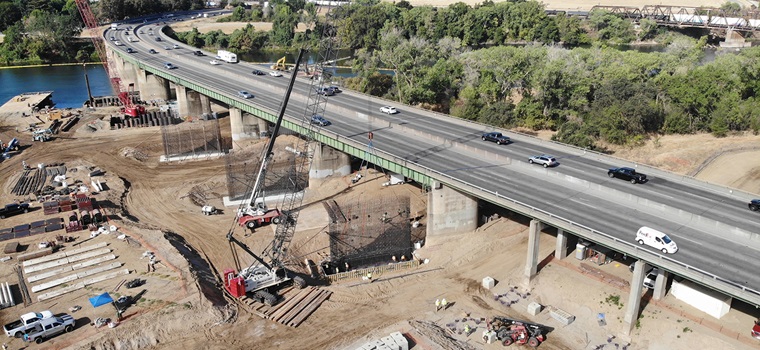
Construction Manager General Contractor approach reduces jobs' costs, timelines
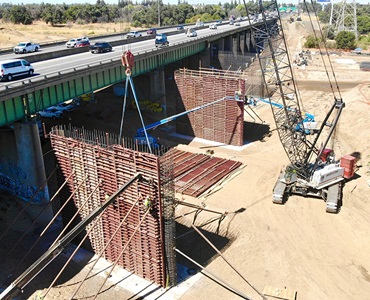
Construction Manager General Contractor (CMGC) is an alternative project delivery method that provides opportunity for Caltrans to leverage CMGC contractor experience by providing innovation and design input during the design phase of complex projects. Such input is not allowed under the traditional design-bid-build delivery method.
CMGC project delivery consists of a two-phase contracting method where the contractor provides preconstruction services and construction services.
In the first phase, Caltrans selects a contractor (the construction manager) based on qualifications. Typically, the construction manager is acquired when Caltrans design is approximately 30 percent complete. The construction manager provides preconstruction services early in the design phase, including input on design, scheduling, pricing, and phasing of the project.
During the design phase the project team tracks innovations, cost savings, and time savings. Innovations are ideas suggested by the construction manager and agreed to by Caltrans to implement in the project.
Having the contract manager as part of the project development team, especially during constructability reviews, is an effective tool in identifying and mitigating project risks prior to entering the construction phase of a project.
When the design is nearly 90 percent complete, Caltrans and the construction manager negotiate an Agreed-To-Price (ATP) for the construction of the project, or a portion thereof for the defined scope. Risks associated with the project are identified, assessed, and agreed to as part of the ATP.
If this price is acceptable to both parties, Caltrans executes a contract for construction services, and the construction manager becomes the general contractor; this is the second phase of the contracting method. If this price is not acceptable to both parties, the project will be advertised as design-bid-build and the CMGC contractor will not be allowed to bid on the project.
The CMGC project delivery method has the potential to provide preconstruction time savings to the project through standalone early work packages. An early work package accelerates the construction of the project because it is awarded for construction before the design of the entire project is completed.
Examples of an early work package are site preparation and early material acquisition/fabrication. Early work packages must be a severable phase of the construction, such that Caltrans is not obligated to have the construction manager construct any other portion of the project. Early work packages can expedite construction work on the critical path and shorten the construction duration, resulting in faster delivery.
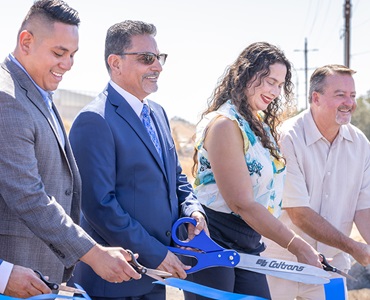
The CMGC Pilot Program was established in 2012 for Caltrans to use on six projects. Effective January 1, 2019, Caltrans was given permanent authority to utilize the CMGC project delivery method on projects with a construction cost greater than $10 million. Projects are approved for CMGC delivery by a Caltrans Alternative Contracting Steering Committee. The selection and approval are based on project complexity, size, location, scope, funding, opportunity for innovation, and amount of design completed.
To date Caltrans has 16 projects in construction that have utilized the CMGC delivery method. The construction manager innovations on these 16 projects total over $400 million, resulting in an overall average15 percent project savings. In addition, the CMGC delivery method has allowed projects to be awarded earlier, saving 105.3 months (nearly nine years) cumulatively on these initial 16 projects.
Caltrans has had many successes on our CMGC projects. The San Mateo 101 Managed Lanes project, completed in March, consisted of converting high-occupancy vehicle lanes to express lanes and adding an additional lane in each direction for a portion of the project limits. Caltrans and the contract manager worked together to condense the schedule with overlapping environmental and design phases allowing the first work package to open seven miles of express lanes in each direction three years early. Through the CMGC process the contract manager was able to contribute best practices and innovative ideas to the project. The contract manager provided input on how to save costs such as potential lane closure extensions increasing production rates and recycling road base on-site reducing off-hauling costs.
On the American River Bridge Rehabilitation project in Sacramento, still partially in the design phase, Caltrans worked closely with the contract manager to determine the methods of construction in the waterway. Collaborating with the contract manager resulted in the project permits being obtained a year earlier than originally anticipated. In addition, determining the methods of construction early in the process allowed Caltrans to identify materials needed for construction and awarded two early work packages acquiring these long lead materials.
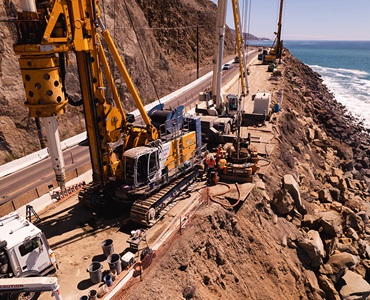
The Cosumnes River Bridge (Sacramento County) Replacement project, for which a ribbon-cutting ceremony was held on Sept. 1, 2022, also had significant time savings. Awarding the work packages on this project a year early allowed for approximately half of the project to be constructed before the planned award date. By constructing the bridge in two phases instead of three, the CMGC process shortened the construction duration by one year. These time savings resulted in the project being completed two years early and providing earlier public benefits.
The contract manager was acquired early in the design process for the Interstate 80/Interstate 680/State Route 12 Interchange project, which was expected to be completed in late spring. This allowed Caltrans and the construction manager in the Solano County project to jointly develop and pursue innovative bridge design changes that saved the project time and money in construction in addition to awarding the project almost a year early. Innovations included changing bridge approach spans from precast girder structures to an on-grade roadway supported by a mechanically stabilized earth wall. Additionally, early joint field investigations were performed confirming that the bridge alignment could be shifted slightly to allow for the new bridge structure to be completed in a single phase rather than two.
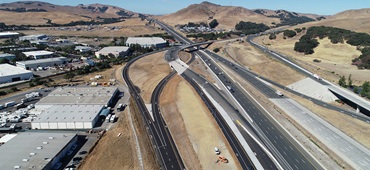
The Ventura Highway 1 Slope Restoration project (anticipated completion: spring of 2024) is located along the shoreline in an environmentally sensitive area. The CMGC process allowed the construction contractor to start work as soon as the contract is approved, saving months by not having to account for advertisement, award, and mobilization. Due to this CMGC efficiency the contractor was able to complete the first item of work within the environmental permit window, so the project was not delayed for an entire season.
The CMGC delivery method provides the opportunity for Caltrans to work collaboratively with the CMGC contractor to refine the project scope, optimize design, improve quality, manage costs, and share risks. With the benefit of this early collaboration, Caltrans has saved both time and money in the delivery of current CMGC projects.
Sources: Caltrans Office of Commercial Vehicle Operations, Division of Traffic Operations

